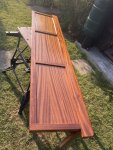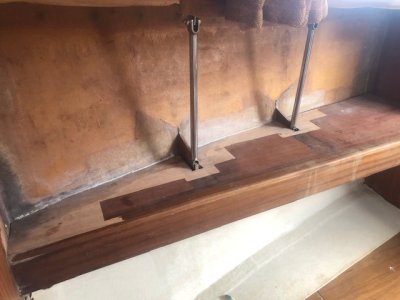laika
Well-Known Member
2 months doesn't count as a resurrection does it? "There's a big difference between mostly dead and all dead".
I note that you used a Morrells acid catalyst lacquer. Some years ago Trafalgar sold me symphony coatings satin pre-catalysed lacquer MN2002-0040 which they claimed was what westerly used (I'm guessing they used several different products at different points) and I used to reasonably good effect (given my lack of natural talent) on a couple of things. I'm a rank amateur when it comes to this kind of thing: Would there be merit to one product over the other and what kind of shelf life do they have?
I note that you used a Morrells acid catalyst lacquer. Some years ago Trafalgar sold me symphony coatings satin pre-catalysed lacquer MN2002-0040 which they claimed was what westerly used (I'm guessing they used several different products at different points) and I used to reasonably good effect (given my lack of natural talent) on a couple of things. I'm a rank amateur when it comes to this kind of thing: Would there be merit to one product over the other and what kind of shelf life do they have?



